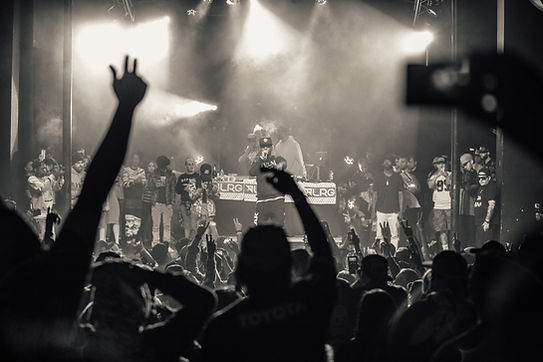MORALPANIC.2022


Rap under fire
The backlash and criticism of rap music by American society.






Artist that faced backlash
In 1993, Snoop Dogg reached No. 1 on the billboard list with his debut album “Dogg style” that featured songs such as “ Gin n’ Juice”, “Murder was the case”, and “Who am I (What's My Name)?” Commonly used phrases in Snoop Dogg's lyrics are expressive sexual actions by women, gun violence, and drug use.
C. Delores Tucker, expressed her moral rage rather than panic about the artist’s debut album and other gangster rap artist like Dr. Dre and 2pac. C. Delores Tucker, the founder of the National Congress of Black Women organized protest of female groups consisting of Dionne Warwick, Melba Moore, and Sister2Sister publisher Jamie Brown. With the goal of urging record companies to discontinue Gangsta rap and ban “harmful” music, Tucker and the protesters gathered around record shops in the Washington D.C area protesting the sale of gangsta rap music. Tucker even took it as far as buying a share of big music companies like Sony and Time Warner, protesting within shareholder meetings.
In responds to C. Delores Tucker, rapper 2pac famously dissed Tucker in his 1996 single, “How Do U Want It?”, rapping, "C. Delores Tucker, you's a motherfucker/Instead of tryin' to help a nigga, you destroy a brother."







Snoop Dogg
N.W.A

NWA. Cheryl Twyne. https://www.flickr.com. CC BY
Snoop Dogg. YungChunLi. /www.pinterest.com. CC BY
The popularity of NWA and their album "Straight Outta Compton", and its most notable song "Fuck Tha Police" was no coincidence. Instead it was a targeted message to law enforcement and politicians who stood against the black and brown community. Instead of focusing on the aftermath of the albums release. I will be focusing on the moral panic that lead to the album being created in the first place.
In urban areas across America, especially Compton, California, black and brown communities faced a never-ending war on poverty, racism, gang violence, and police brutality. Minority people were brutalized and dehumanized by mainstream media and law enforcement without justice or awareness being brought to them. In addition, many families lived in poor conditions and lived perilous lifestyles that weren't being taken serious by their state government. This was the moral panic N.W.A aimed to address in their music; rapping the unheard anger towards injustice and inhumanity of the black plight.









C Delores Tucker was not the only crusader against Gansta rap; there were presidential candidates, congressmen, and academics who also condemned the genre targeting the repeated topics discussed in rap music and contributed them to the rise in crime, drug use, and the demise of children’s innocence. However, as aggressive as these individuals were on missions, their reasons were passive and veiled with harsh social perceptions on black men and their reality. The social attitudes towards black men were that their bodies were inherently violent and dangerous to society, and to poor uneducated white women. Gangsta and hip hop rap in its early days started out as danceable music, and then became a reflection of their reality and everyday life. Artist like NWA, Snoop Dogg, and 2 Live Crew expressed their reality and life through their music, something what was previously not done. When the lives of black and brown communities were ignored and dismissed, rap artists used their lyrics to put them on display. They did this to enlighten their audience, many of them white Americans, of the hardships and trials faced in minority communities.



